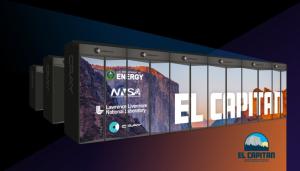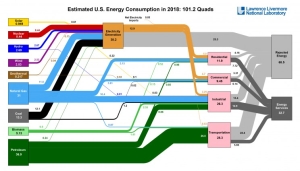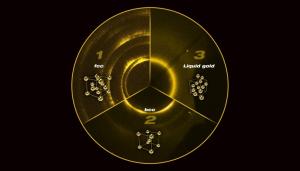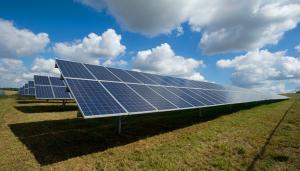LAB REPORT
Science and Technology Making Headlines
Aug. 23, 2019


The Department of Energy, National Nuclear Security Administration and Lawrence Livermore National Laboratory announced the signing of contracts with Cray Inc. to build the NNSA’s first exascale supercomputer, “El Capitan.”
Towering above the rest
The U.S. is spending another $600 million to build its third "exascale" supercomputer, which will be focused on simulating nuclear explosions.
The Department of Energy announced, “El Capitan,” a machine designed to achieve 1.5 exaflops, or 1.5 quintillion calculations per second. The processing power will dwarf the capabilities of the top 100 supercomputers combined when it's completed in late 2022 at Lawrence Livermore National Lab.
El Capitan will have a special mission: It will conduct classified experiments to ensure that the U.S. nuclear weapons arsenal remains in good working order.
The government is building the supercomputer to serve the National Nuclear Security Administration, the federal agency charged with maintaining the country's nuclear weapons stockpile. In 1992, the U.S. conducted its last live nuclear test, and since then, the country has relied on supercomputers to carry out the detonations virtually.


Americans used more energy in 2018 than in any other year, according to the most recent energy flow charts released by Lawrence Livermore National Laboratory.
Seeing is believing
If you feel like you’ve seen this diagram before, you probably have.
Every year, it’s assembled by Lawrence Livermore National Laboratory to chart all U.S. energy use in one Sankey diagram, including the original energy source, e.g., nuclear, oil, wind, as well as the ultimate end use, e.g., residential, commercial, for the energy that was generated.
According to the Lab’s most recent published version of the diagram, U.S. energy use totaled 101.2 quads in 2018. A single quad is equal to 1 quadrillion BTUs, with each quad being roughly equivalent to 185 million barrels of crude oil, 8 billion gallons of gasoline, or 1 trillion cubic feet of natural gas.
Solar use has increased 122 percent since 2014, while wind jumped 46 percent over the same timeframe, while energy derived from coal fell by 26 percent.


This simulation shows a U.S. Coast Guard CubeSat in orbit over Alaska’s Aleutian Peninsula searching for life rafts after a storm.
CubeSats to the rescue
Nanosatellite technology, in particular, small cube satellites, are finding purpose in the most extraordinary places. Known as CubeSats, these miniature versions of conventional satellites can be used for applications that range from tracking space debris to monitoring atmospheric gas concentrations.
Lawrence Livermore scientists and engineers are turning their expertise in CubeSat development toward assisting the U.S. Coast Guard in becoming a spacefaring agency.
Shawn Higbee, an associate program leader in the Laboratory’s Space Science and Security Program, leads the project. He says: “The Coast Guard came to us because they were excited by the promise of space and wanted to refine their strategy on where to start. So, we helped develop a strategy and technical roadmap for how small satellites could help Coast Guard missions.”
With more than a dozen mission objectives, which include search and rescue activities, iceberg monitoring operations, law enforcement, fishery protection and homeland defense, the Coast Guard operates over vast areas of the Arctic, Pacific and Atlantic oceans.


This graphic shows three of the raw images collected at Argonne National Laboratory’s Dynamic Compression Sector, highlighting the diffracted signals recorded on the X-ray detector. Section 1 shows the starting face-centered cubic structure; Section 2 shows the new body-centered cubic structure; and Section 3 shows the liquid gold.
Striking it rich with a new form of gold
Researchers at Lawrence Livermore National Laboratory (LLNL) and the Carnegie Institution of Washington have conducted a new study in which they found a new structure of gold. The team discovered a new structure for the precious metal by compressing it rapidly.
According to the scientists, when gold is compressed over nanoseconds, the increase in pressure and temperature changes the crystalline structure to a new phase of gold. The well-known body-centered cubic (bcc) structure is changed into a more open crystalline structure than the fcc (face-centered cubic) structure. Gold prefers to be in an fcc structure, according to the team.
Lead study author Richard Briggs from LLNL said that the team has discovered a new structure in gold that exists at extreme states. The pressure required to produce the new structure in the gold was two-thirds of the pressure found at the center of the Earth. Briggs also notes that the new structure has less efficient packing at higher pressures than the starting pressure, which was a surprising finding.


New research by LLNL scientists shows that solar cell efficiency can improve by using metal nanowire meshes that provide high transmissivity and high electrical connectivity.
Ordering up nanowires
A new method of creating an ordered mesh of nanowires, developed by scientists at Lawrence Livermore National Laboratory, could lead to the creation of more efficient transparent electrode layers in solar cells – and the elimination of a rare material from the manufacturing process.
The team discovered a way to create a nanowire mesh structure that could be applied to various metals. The method, according to the researchers, could enable manufacturers to replace indium tin oxide film as the transparent electrode layer in a solar cell by instead using a mesh based on cheaper, more abundant material.
With tiny-diameter wires and several contact points, an ordered nanowire mesh has the potential to provide high transmissivity and electrical connectivity – vital in a transparent electrode layer. However, working on such an ordered structure at nano level and scaling back up to cover a device-relevant area has proved challenging.





